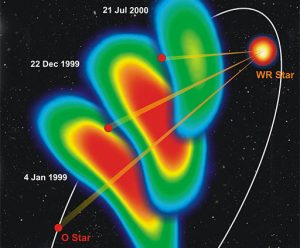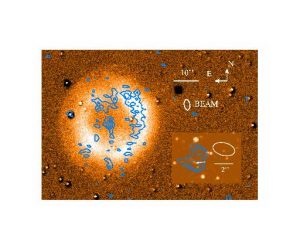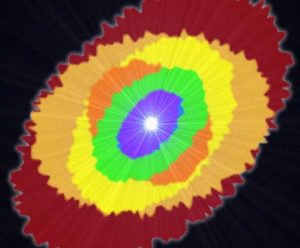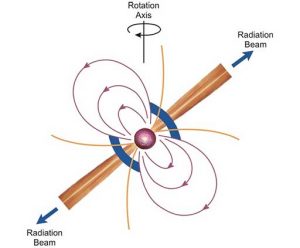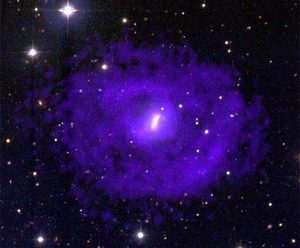Interstellar travelers might want to detour around the star system TW Hydrae to avoid a messy planetary construction site.
Scientists Track Collision of Powerful Stellar Winds
Astronomers using the National Science Foundation’s Very Long Baseline Array radio telescope have tracked the motion of a violent region where the powerful winds of two giant stars slam into each other.
Old Star’s ‘Rebirth’ Gives Astronomers Surprises
Astronomers using the National Science Foundation’s Very Large Array radio telescope are taking advantage of a once-in-a-lifetime opportunity to watch an old star suddenly stir back into new activity after coming to the end of its normal life.
Mysterious Magnetar Yielding Secrets to VLA
A giant flash of energy from a supermagnetic neutron star thousands of light-years from Earth may shed a whole new light on scientists’ understanding of such mysterious magnetars and of gamma-ray bursts.
Star Cluster Buzzing with Pulsars
A dense globular star cluster near the center of our Milky Way Galaxy holds a buzzing beehive of rapidly-spinning millisecond pulsars, according to astronomers who discovered 21 new pulsars in the cluster using the National Science Foundation’s 100-meter Green Bank Telescope in West Virginia.
Dwarf Galaxy Gives Giant Surprise
An astronomer studying small irregular galaxies discovered a remarkable feature in one galaxy that may provide key clues to understanding how galaxies form and the relationship between the gas and the stars within galaxies.







